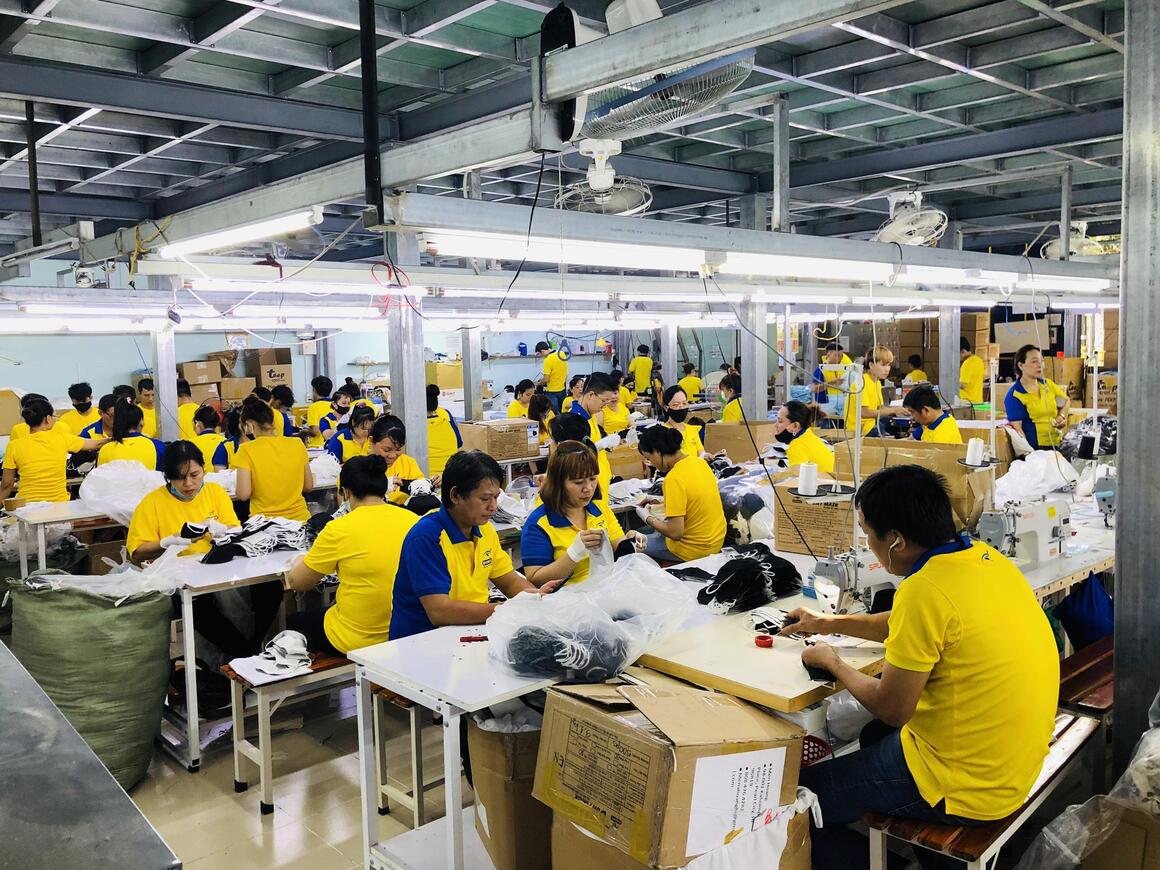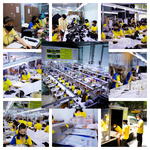According to the Ministry of Industry and Trade of Vietnam, the export turnover of the textiles and apparel sector in the first 7 months of 2020 is estimated at 16.18 billion USD, equivalent to a decrease of 12.1% over the same period in 2019.
The Ministry of Industry and Trade also said that, as of July, many businesses have almost no orders for the last 2 quarters of the year, especially in high-value products such as suits or high-end shirts. Meanwhile, the price of masks and protective goods has fallen sharply due to oversupply globally.
In fact, the Vietnam Textile and Apparel Association (VITAS) has recorded an average rate of cancellation of orders at businesses in the industry at about 30-70%. A strong drop in orders made inventories increase, along with the pressure to pay wages, which made businesses pile up with difficulties.
However, Vietnam's textile and garment industry still experience some positive development in the time of crisis. Vietnam has surpassed Bangladesh and risen to the 2nd position in the global garment and textile exports during the first half of 2020. Bangladesh was the second-largest garment exporter after China.
Data from the General Statistics Office of Vietnam and the Bangladesh Export Promotion Bureau show that Vietnam earned 13.18 billion USD in the first 6 months of the year thanks to exports of textile and garment products, while Bangladesh earned only 11.92 billion USD.
In response to the Dhaka Tribune of Bangladesh, Vice President of Bangladesh Knitwear Manufacturers and Exporters Association (BKMEA) Mohammad Hatem said that the country's garment industry has been heavily influenced by the pandemic.
“From the beginning of the year, exports were in the downtrend. During the April-May period, the fall was expedited by the COVID-19 pandemic as the US witnessed the worst case of infection of coronavirus,” said Hatem.
Meanwhile, Prof Mustafizur Rahman, a fellow at the Centre for Policy Dialogue (CPD), told Dhaka Tribune that “the concern is our competitors, especially Vietnam, who is doing better even amid the pandemic. They are trying to retain the market shares and gaining more from China's losing market share”.
Post-pandemic development
To maintain their performance and thrive further in the post-pandemic era, many Vietnamese garment enterprises are pushing preparation for the EU-Vietnam Free Trade Agreement (EVFTA).
Established in 2009, the Dony Garment Company, a subsidiary of Dony International Corporation, is a garment manufacturer focusing on producing clothes and uniforms in Vietnam. In the local market, Dony Garment is one of the biggest manufacturers of uniforms, workwear, sportswear & outdoor fashion in Ho Chi Minh City, Vietnam.
Mr. Pham Quang Anh, Director of Dony Garment Company, said that his business is present in the US, Europe, and Middle East markets. However, Dony is preparing to expand further in the European market over the next 1 or 2 years, which the company predicts will be the time when EVFTA truly shows strength in the garment industry.

Specifically, Dony has standardized the factory production process, taken thoughtful actions to secure the worker’s welfare, and been aware of environmental protection. The firm has obtained ISO 9001, ISO 13485, ISO 14001 certifications and is undergoing the Business Social Compliance Initiative (BSCI) assessment and Wellness Recovery Action Plan (WRAP).
In 2016, Dony started to expand exports after six years of operation. Up to now, Mr. Quang Anh estimates that Dony's sales are about 2-3 million USD per month.
The firm focuses on basic fashion products and uniforms. During the pandemic strike earlier this year, Dony was one of the first Vietnamese enterprises to convert to face mark and other producing protective gear export, helping it to maintain business operations and stabilize jobs for workers.
The transition also helps the company expand its scale, purchase advanced equipment, and upgrade its production chain.
From 2019, VITAS has urged businesses in the textile and apparel industry to prepare for the EVFTA and approach the European market. After EVFTA takes effect, textiles and garments will be reduced by 42.5% of tariff lines.
Talking about his willingness to conquer big markets like the US and Europe, Pham shared that small and medium-sized businesses like Dony need to make great efforts to improve their skills and find ways to meet the requirements of difficult markets.
“Orders from Japan are usually 3-5 higher in price compared to other countries, but they come with extremely strict and meticulous requirements. Although Dony mostly suffered losses, we still received some of those orders to demonstrate quality capabilities and connect reputable business relationships.
Thanks to these orders, Dony has upgraded the manufacturing process and product quality more than before. From there, we can easily meet the requirements of other markets,” explained Pham.
Vietnam's garment industry has the following advantages/strength:
- Garment equipment has basically been renovated and modernized, creating conditions for upgrading processes and products;
- Vietnam's garment products have penetrated most of the main markets with high penetration, creating conditions for Vietnamese garment to consolidate its foothold and expand access to consumers;
- Vietnam's garment industry has built close relationships with major customers and global buyers, ensuring stable output conditions for Vietnam's garment exports;
- Vietnam has an abundant source of cheap labor, which is an important competitive advantage for labor-intensive industries such as the garment industry;
- The socio-political environment and macroeconomic environment of Vietnam is stable, is the foundation to attract foreign investment as well as a domestic investment;
- The long tradition of the garment industry in Vietnam contributes to strengthening domestic strong economic linkages, ensuring a source of skilled labor in the industry as well as increasing the attractiveness of the industry;
- Vietnam is in a favorable position for trade with countries in the world, creating favorable conditions for the import of inputs for garment production and the export of garment products to markets;
- Vietnam has favorable conditions to develop supporting industries such as growing cotton, growing mulberry, raising silkworms, producing preliminary and artificial fibers, creating favorable conditions for boosting the production of raw materials, especially fabrics and clothing. for garment manufacturing and exporting.






